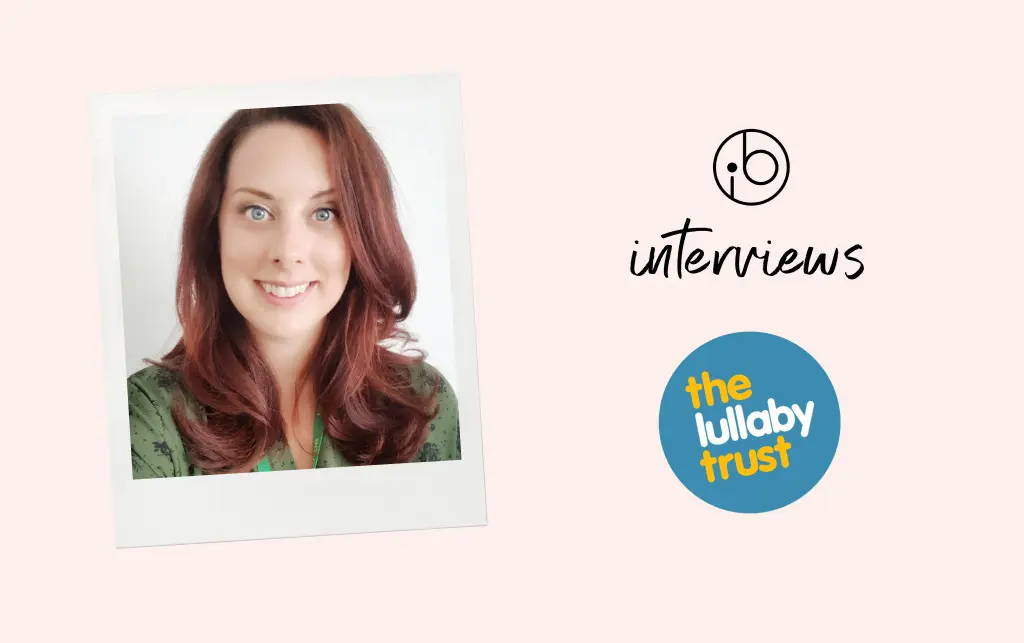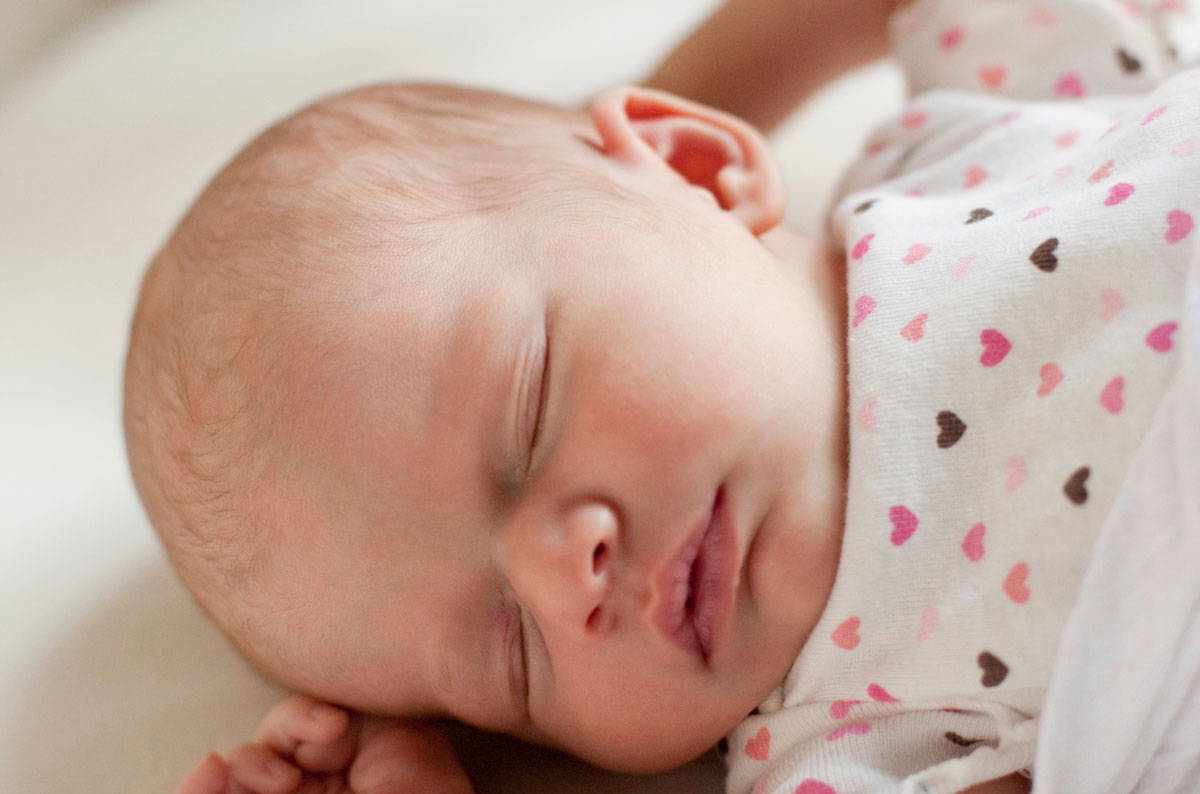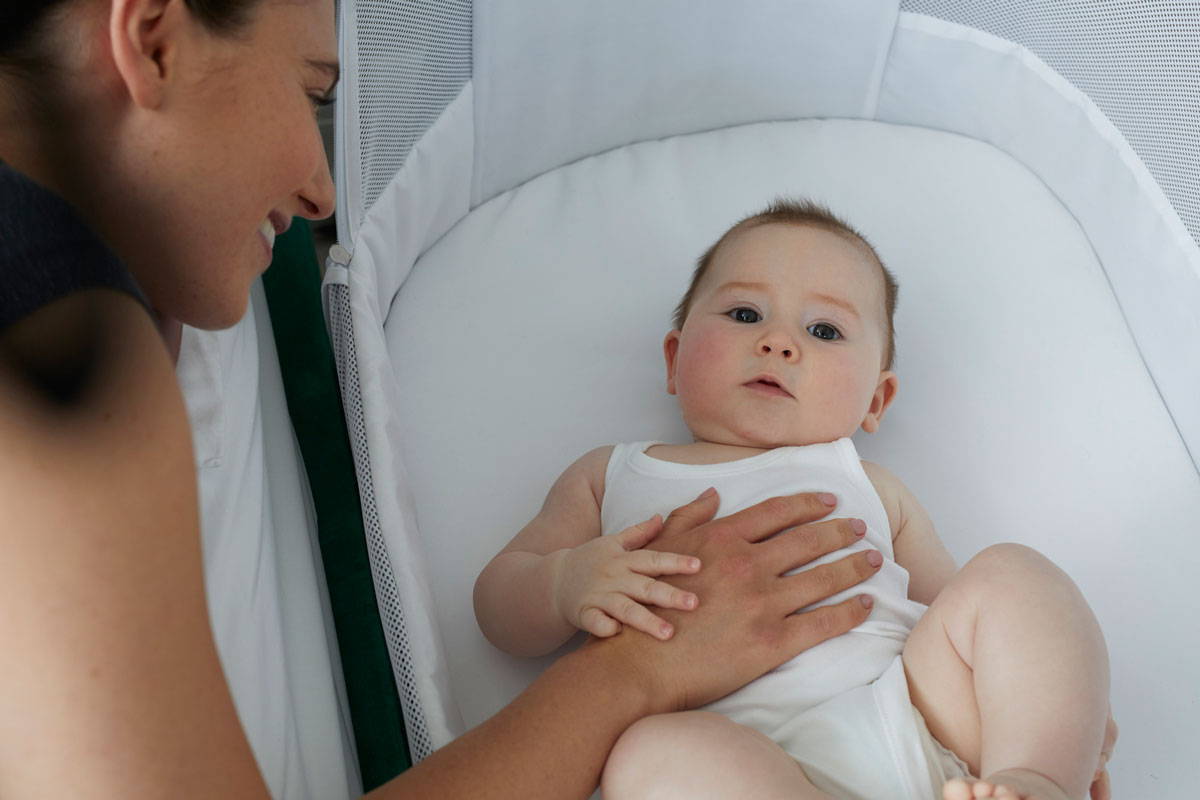
Share
Safe Sleeping Tips
Interview with Stacey from The Lullaby Trust

Sleep is always a big issue for new parents. From sleep routines to night time feeds and general concerns about safe sleep – there’s a lot to think about. So, to mark Safer Sleep Week, we spoke to Stacey from The Lullaby Trust, to get their top tips for keep your baby safe during those night time snoozes and mid-day naps.
If you’ve not heard of The Lullaby Trust before, they’re a charitable organisation that aims to promote infant health and prevent unexpected deaths in infancy. They also support research into various causes of sudden death and support bereaved parents. So they really do know what they’re talking about.
So over to Stacey…
Watch the video or scroll down to read the full transcript.
What is the safest way to put baby down for a sleep?
At the Lullaby Trust, all our safer sleep advice applies to daytime naps as well as night-time sleeps. We know that the safest place for baby to sleep is in their own clear sleep space on a firm, flat waterproof mattress.
Place baby on their back with their feet at the foot of the bed and make sure any loose bedding is firmly tucked in around baby. We recommend keeping baby in the same room as you for the first six months – that’s at night-time as well as during the day for their naps. So, place baby on their back for every sleep in a clear, flat sleep space and keep them smoke free day and night.
What bedding does baby need?
We know a clear cot is a safe cot for baby, they don’t need lots of bedding. All they need is either a well-fitting sleeping bag or lightweight blanket that’s firmly tucked down the sides of the mattress and not at shoulder height and making sure that baby’s feet are at the foot of the bed. We want a firm, flat waterproof mattress with no other soft of bulky bedding around. So, no cot bumpers, no pods or nests, no duvets, or pillows for baby. And remember, if there are any soft toys in the cot, take them out before baby goes to sleep. Remember: keep it clear.

What is the ideal room temperature for baby to sleep in?
So, when it comes to an ideal temperature for the room that baby sleeps in, we want to make sure they’re comfortable. So not too warm but not too cold.
We do know, however, that babies that are overheating are at increased risk of sudden infant death syndrome, or SIDS. So, we’d always rather they be on the cooler side than too hot. An ideal temperature would probably be between 16 and 20 degrees Celsius, but we do know that all babies are completely different.
Our best advice is to check baby’s temperate by feeling the skin on their torso, so on their chest or the back of the neck. We know they usually have slightly colder hands and feet, so always check the torso. If baby’s skin feels warm or clammy or sweaty to touch, we’d recommend removing a layer of clothing or bedding and remember that they don’t need hats inside as that can lead to them overheating as well.
How can parents keep baby comfortable when sleeping during hotter months?
It can be quite tricky in those summer months to make sure that’s baby’s sleep space is as cool as possible. We always recommend between 16 and 20 degrees Celsius for the room. Sometimes this can be achieved by making sure the blinds and curtains are closed during the day, so the direct sun isn’t coming into the room.
It’s totally fine to use a fan, just make sure it’s not pointing directly at baby. However, the best way to check if your baby is too warm, is checking the skin on their chest or the back of their neck. If it feels hot to touch or clammy or sweaty, your baby’s probably a little bit too warm, so we’d recommend removing a layer of bedding or clothing. Don’t be worried about removing those, we know that on a really hot day, it’s perfectly fine for baby to sleep just in their nappy.
What should parents do when baby starts rolling?
At the Lullaby Trust, we get asked about rolling all the time. It is really daunting for you as parents. Suddenly you wake up in the middle of the night and you happen to look in the cot and baby is on their side or on their tummy. We do know, however, that from 5 and a half to six months of age, it’s perfectly normal and natural for baby to start rolling and finding their own sleep positions.
So, continue to put baby down to sleep on their back when you initially put them down on a night. Make sure you’re following all our other safe sleep advice: so you still have that firm, flat waterproof mattress, you’ve got that clear cot space for them, as well.
Do lots of Tummy Time for them during the day whilst they’re awake to help strengthen and build up those muscles. That’s going to help them rolling backwards and forwards. But if you do wake up in the middle of the night and your baby is over 5 and a half to 6 months old, and you find them on their side or their tummy during the night, don’t worry, you don’t need to stay awake all night rolling them back over again.
What advice do you have for families who wish to co-sleep?
So, we know that some families co-sleep or bedshare. Whether that’s accidentally falling asleep after feeding baby in the middle of the night or it’s a decision that you’ve taken because it works better for you as a family, we’ve developed a little bit of guidance to make sure that, if you do co-sleep, you’re doing it in the safest way possible.
We always recommend continuing to follow the rest of our safer sleep advice. That includes making sure baby is still sleeping on their back on a firm, flat waterproof mattress; making sure that there is no bedding around baby – so no cushions, pillows or duvets – anything that’s going to cause baby to overheat or risk coving baby’s airway.
We always advise against having other children in the bed if you’re co-sleeping, and that’s the same for pets as well. And make sure that there’s no risk that baby’s going to roll out of bed and fall or get trapped between the mattress and the wall.

There are a few circumstances where we would advise against co-sleeping. That includes if you have a premature baby, born before 38 weeks’ gestation or if you’ve got a low birth weight baby - under 2.5kg or 5 and a half pounds. If you or your partner smoke, whether that’s in the same bedroom or outside, we’d recommend against co-sleeping. It also includes if you or your partner have consumed alcohol or taken any drugs or medication that would make you more drowsy than normal.
We always advise against falling asleep on an armchair or sofa with baby because we know that this increases the risk of sudden infant death syndrome by up to 50 times.
So, if you co-sleep, whether it’s by choice or by accident, as long as you follow these safer sleep guidelines, we can make sure you baby stays safe.
How can you ensure baby is safe when sleeping in their car seat on long journeys?
If you’re going on a slightly longer journey with baby in the car, ideally, we would recommend a second adult sitting on the back seat next to baby so they can keep an eye on them. However, we know that this isn’t always possible so, instead, you can use the mirror to make sure you have full view of baby.
If at any point during the journey, you notice baby has slouched forward, or their chin has fallen onto their chest, we recommend stopping the journey, getting out of the car, repositioning baby, and making sure their head is tilted back again before carrying on your journey.
Some safety experts and health professionals recommend that baby shouldn’t be in car seat for more than 2 hours at a time. We recommend once you get to your destination, make sure you get baby out of their car seat and lay them on a firm, flat sleep space if they do want to carry on napping.
Thanks so much, Stacey!

